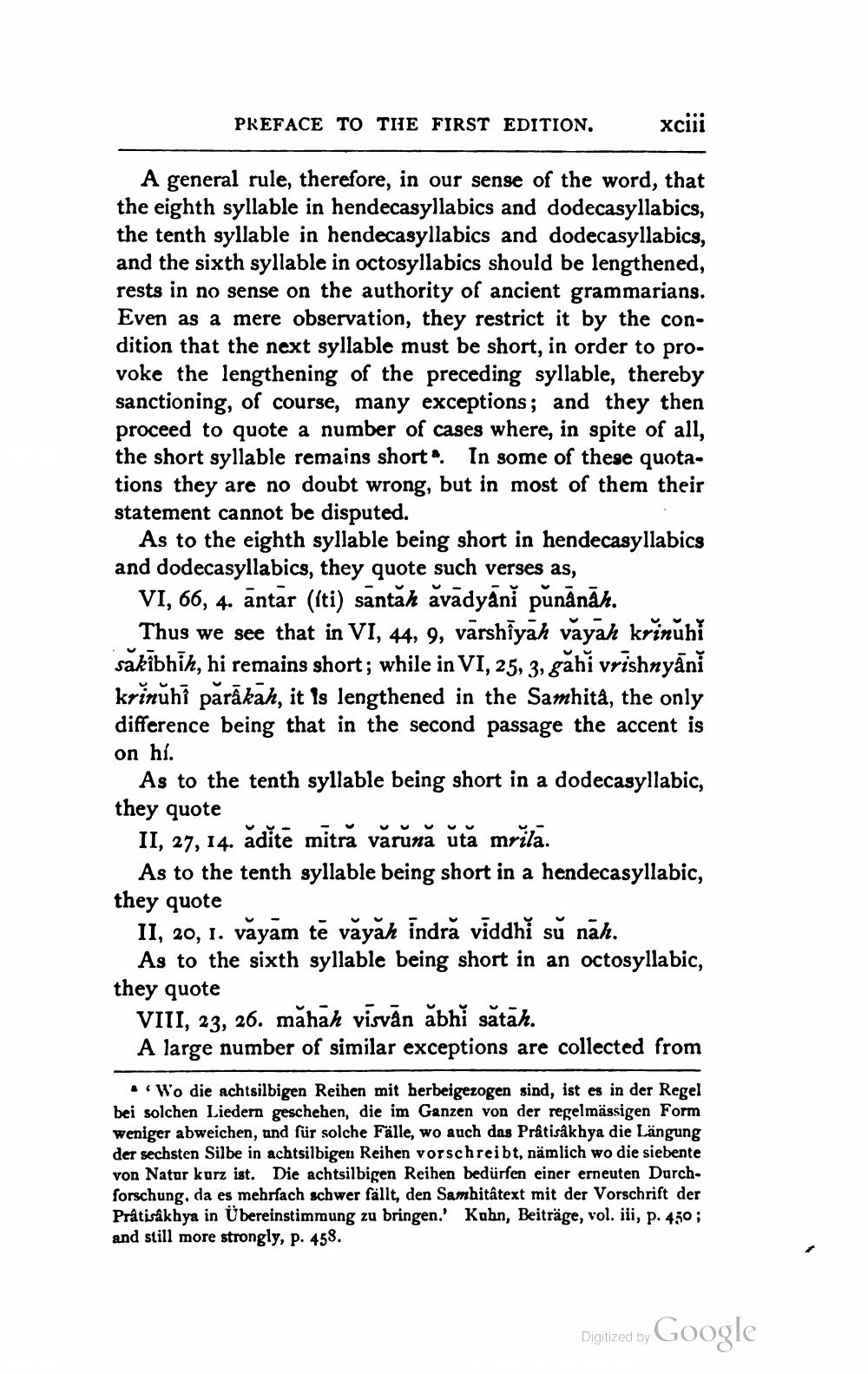________________
PREFACE TO THE FIRST EDITION.
xciii
A general rule, therefore, in our sense of the word, that the eighth syllable in hendecasyllabics and dodecasyllabics, the tenth syllable in hendecasyllabics and dodecasyllabics, and the sixth syllable in octosyllabics should be lengthened, rests in no sense on the authority of ancient grammarians. Even as a mere observation, they restrict it by the condition that the next syllable must be short, in order to provoke the lengthening of the preceding syllable, thereby sanctioning, of course, many exceptions; and they then proceed to quote a number of cases where, in spite of all, the short syllable remains short. In some of these quotations they are no doubt wrong, but in most of them their statement cannot be disputed.
As to the eighth syllable being short in hendecasyllabics and dodecasyllabics, they quote such verses as,
VI, 66, 4. antar (sti) santăh avādyāni punānāh.
Thus we see that in VI, 44, 9, värshīyah vayah krinuhi salībhih, hi remains short; while in VI, 25, 3, gahi vrishnyāni krinuhi părākah, it is lengthened in the Samhita, the only difference being that in the second passage the accent is on hi.
As to the tenth syllable being short in a dodecasyllabic, they quote
II, 27, 14. adite mitră vărună ută mrila.
As to the tenth syllable being short in a hendecasyllabic, they quote
II, 20, 1. vayam tē vayah indră viddhỉ sú nāk.
As to the sixth syllable being short in an octosyllabic, they quote
VIII, 23, 26. mähan visvān abhi sătāh. A large number of similar exceptions are collected from
• Wo die achtsilbigen Reihen mit herbeigezogen sind, ist es in der Regel bei solchen Liedern geschehen, die im Ganzen von der regelmässigen Form weniger abweichen, und für solche Fälle, wo auch das Prátisakhya die Längung der sechsten Silbe in achtsilbigen Reihen vorschreibt, nämlich wo die siebente von Natur kurz ist. Die achtsilbigen Reihen bedürfen einer erneuten Durchforschung, da es mehrfach schwer fällt, den Samhitâtext mit der Vorschrift der Prátisakhya in Übereinstimmung zu bringen.' Kuhn, Beiträge, vol. iii, p. 450 ; and still more strongly, p. 458.
Digitized by Google




